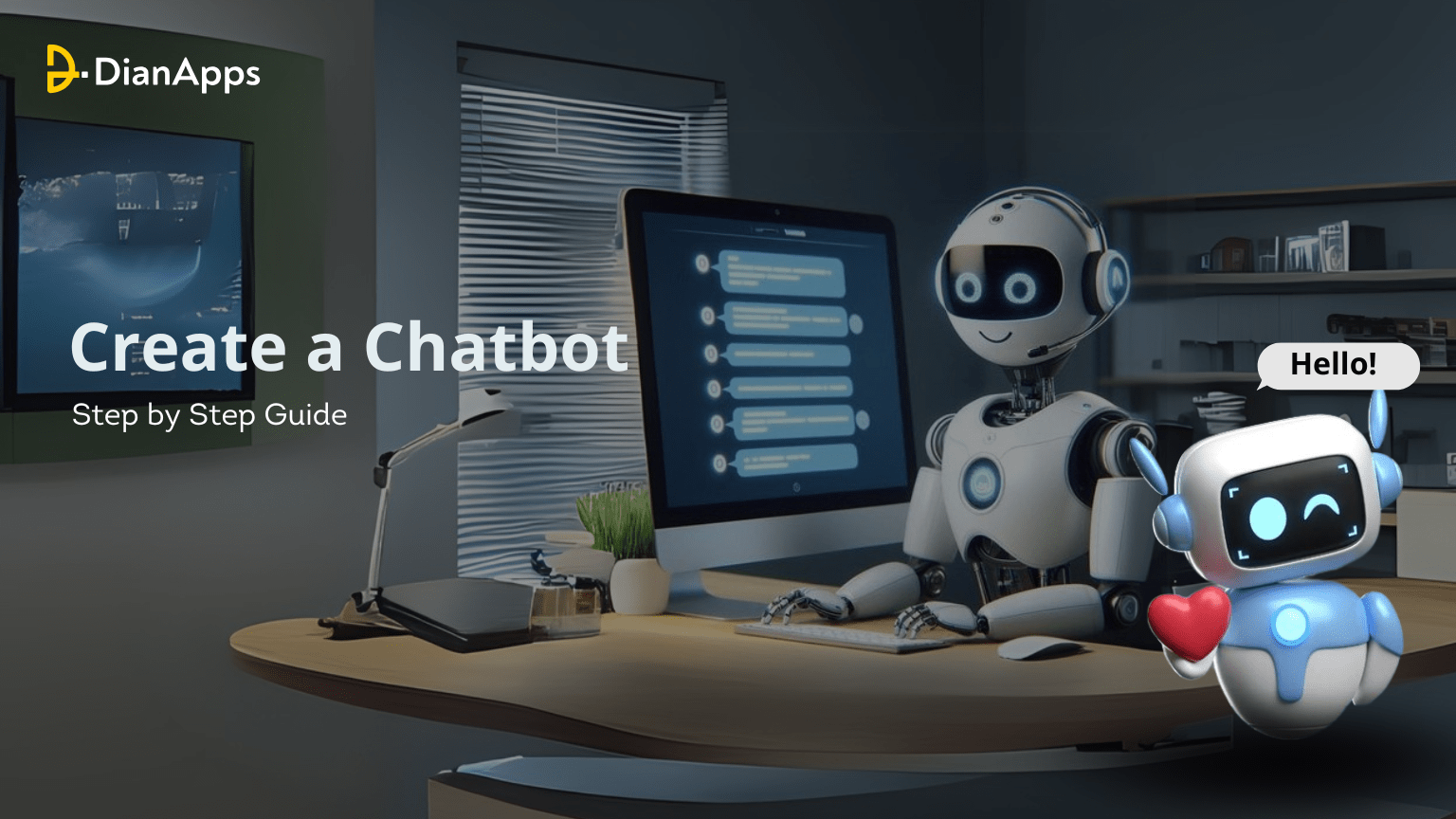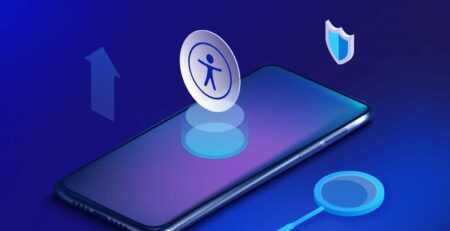Step-by-Step: How to Create a Powerful Chatbot
Have you ever been in a situation where you are always trying to get help from a customer service representative? Or maybe you’ve visited a website and wasted valuable time going through endless menus trying to find important information. Doesn’t it get very complicated. Ever imagined a technology that can easily help you through your questions and provide solutions instantly without the need for human interaction. This is where the role of chatbots comes into the market.
Evolution of chatbots has changed the process of interaction between customers and business owners. Now, chatbots have reduced the need for human interaction to provide solutions. Chatbots not only help you to provide answers but can also help you shop. Though every bot doesn’t work in the same direction. Before integrating a bot for any business ensure to understand your customer requirements. Moreover, for the integration you chatbot you must always connect with a mobile app development service provider.
The full process for developing a chatbot will be described in this blog. This is the ideal location for developers or business owners searching for a chatbot development plan. Here, we’ll go over anything from the basic principles of chatbots to how to create one for the business you work for.
What do you Understand by Chatbot?
Chabot is an AI-powered tool that can initiate the conversation with the humans regarding their queries without the need for human users. These bots can even reply in audio or text form. But they only answer queries by users, provide relevant solutions, or even assist clients regarding appointment booking or purchasing supplies.
For example, whenever you visit a website you notice when you open some website a small pop up window appears below, i.e. a chatbot which is always ready to reply. These bots are always available to provide assistance to users related to tracking orders, finding a product, or resolving any issue.
Despite its seeming future, this technology has already been widely used in many industries, saving time, money, and customer satisfaction. What’s the best part? To make one, you need to know how to code. Building a chatbot is possible for anyone with the right resources and a well-defined strategy.
Different Types of Chatbots
Before moving forward with the process of developing a chatbot, it is crucial to know about the different types of chabots. Usually you must have seen rule-based chatbots and AI-powered chatbots, but here are some more types of bots.
Rule-based Chatbots (Menu-driven)
- What they are: These chatbots follow a set of predefined guidelines. When the user interacts, the bot guides the conversation by asking targeted questions or offering options.
- For example: Consider a chatbot that asks, “Which do you prefer—to talk to customer service or sales?” Once you select an option, it presents more options based on that selection.
- Pros: Easy to create and perfect for simple tasks like following orders, scheduling appointments, asking frequently asked questions.
- Cons: Limited flexibility; Only instructions or questions that fall under those rules can answer.
AI-powered Chatbots
- What they are: With the help of the powerful technology of machine learning and artificial intelligence, these chatbots understand common language. They are able to interpret the meaning of the user’s question and provide a more appropriate, contextual response.
- Example: “Can you help me back?” Send the customer support bot. Even if the phrasing changes (for example, “I need to return my product”), the AI-powered bot can still understand what you mean and deliver a customized response.
- Pros: Highly flexible and capable of handling complex, random conversations.
- Cons: Because it has to understand different applications and situations, training takes a lot of time and effort.
Voice Assistants
- What they are: These chatbots, like Amazon Alexa, Google Assistant, and Siri, communicate with customers through voice.
- For example: If you interact with a voice-based chatbot when you tell Google Assistant to set an alarm.
- Pros: Popular in smart home devices Good for hands-free communication.
- Cons: Because voice-based communication relies heavily on speech recognition, it can sometimes be difficult.
Hybrid Chatbots
- What they are: Hybrid chatbots blend AI capabilities with rules-based systems. Using predefined mechanisms, it can handle simple requests and transition to AI as the conversation becomes more complex.
- For example: Before using AI to solve a customer’s concerns, the bot can provide frequently asked questions that require more sophisticated understanding.
- Pros: Offers the best of both worlds and is customizable.
- Cons: A lot of development time and money has to be spent to integrate the two technologies.
Read about How to Build a Chat App Like Discord.
Key Advantages of Integrating Chatbot into a Software
Chabots have reduced the physical interaction with human beings now it provides an immediate solution to people. There are multiple other benefits of chatbots. Read further, to know about some of the benefits:
24*7 Availability
Sleep is not necessary for chatbots. Due to a round the clock availability of chatbots, now people can ask queries at any time of the day without having to wait for a person to call or text. This technology is really helpful for businesses dealing with people from different time zones.
Cost Saving
Integration of chatbots has reduced the need for human intervention, by automatically performing repetitive tasks like answering frequently asked questions or fulfilling orders. This technology has resulted in high cost saving by enhancing customer service.
Better Customer Experience
Because chatbots respond immediately, customers don’t have to wait around for a longer response. In addition to increasing customer satisfaction, this can lead to increased conversion rates and repeat business.
Increased Productivity
Because chatbots can handle multiple interactions at once, organizations can grow without investing in more staff. This is a significant advantage compared to human agents where only one connection is made at a time.
Information Gathering and Understanding
Chatbots help organizations better understand their customers’ needs, wants and pain points by collecting useful information during interactions. With the help of this data, products, service and marketing strategies can be improved.
Personalized Experiences
Chatbots can use customer data to deliver personalized messages, product recommendations and solutions. This personalization of users makes for a more enjoyable and satisfying experience.
Read more about What Are the Benefits of Using AI Chatbots in Edtech?
Step-by-Step Process to Create a Chatbot
Now you must have understood the basics of chatbots, it’s time to learn more about the advanced method of developing a chatbot. Here’s how to create one, whether you’re doing it for social networking, a mobile app, or your website:
Define Your Chatbot’s Purpose
Clearly defining the goals of your chatbot is the first step. Consider this:
- What problem will your chatbot solve?
- What communication can it control?
- Will they focus on sales, lead generation, customer service, or another area?
Your chatbot’s impact increases with the specificity of your goals. For example, the primary objective of a chatbot established for a restaurant may be to fulfil orders or answer questions about the menu. If you’re working for a tech support company, you may be required to look for and fix issues with customers.
Choose the Right Platform
The platform you choose to build your bot will depend on your technical skills and the needs of the chatbot. There are several well-known platforms for chatbots:
- Dialogflow (by Google): Google’s Dialogflow is ideal for AI-powered bots that need to understand natural language.
- Tars: Ideal for conversational landing pages that get visitors engaged.
- ManyChat: It is the best way to integrate with social media sites like Facebook Messenger.
- Botpress: An open source chatbot platform with many customization options.
Choose a platform based on your needs and customization.
Design Conversation Flow
To succeed, chatbots need to engage in discreet conversations. When building a rule-based bot, create decision trees that take users through different stages. Try to structure conversations to seem engaging and natural for an AI-powered bot.
A few things to consider:
- Greeting Message: Start with a good greeting.
- Personalization: Use customer information such as name, location, and preferences to make the interaction feel unique.
- Escalation: Provide a backup strategy in place if the bot is unable to answer a question, such as referring the user to a human agent.
Train Your Chatbot (for AI Bots)
If you’re developing one, it’s time to start training your AI-powered chatbot. Give it a sample dialog to help it identify different ways users can make their queries. Training includes:
- Teaching understanding of value, such as user intent.
- Descriptors, such as a particular object or sex.
- Constantly improving their responses to new encounters.
Integrate the Chatbot
Once your chatbot is ready, you need to integrate it into your platform or program. This will be:
- Embedding a chatbot widget into your website.
- establishing communication between you and your CRM system.
- By connecting with messaging apps like WhatsApp, Slack and Facebook Messenger.
Test, Monitor, and Optimize
Ensure to test it thoroughly before installation to ensure the chatbot will work as intended. Test different scenarios and edge cases to see bot performance. Monitor the conversation for comments after deployment and gradually grow the bot.
Final Words
Developing an effective chatbot is an exciting endeavor that can transform customer interactions, optimize company processes, and increase productivity. If you follow the guidelines in this article you can create a chatbot to help your company and consumers in special ways. By leveraging chatbot technology, you’ll be at the forefront of delivering faster, smarter and more personalized experiences as the future of customer engagement changes.
Why, then, should we wait? Start building your chatbot now, and notice how it changes business correspondence! For the integration of chatbot you can connect with a custom software development company.




